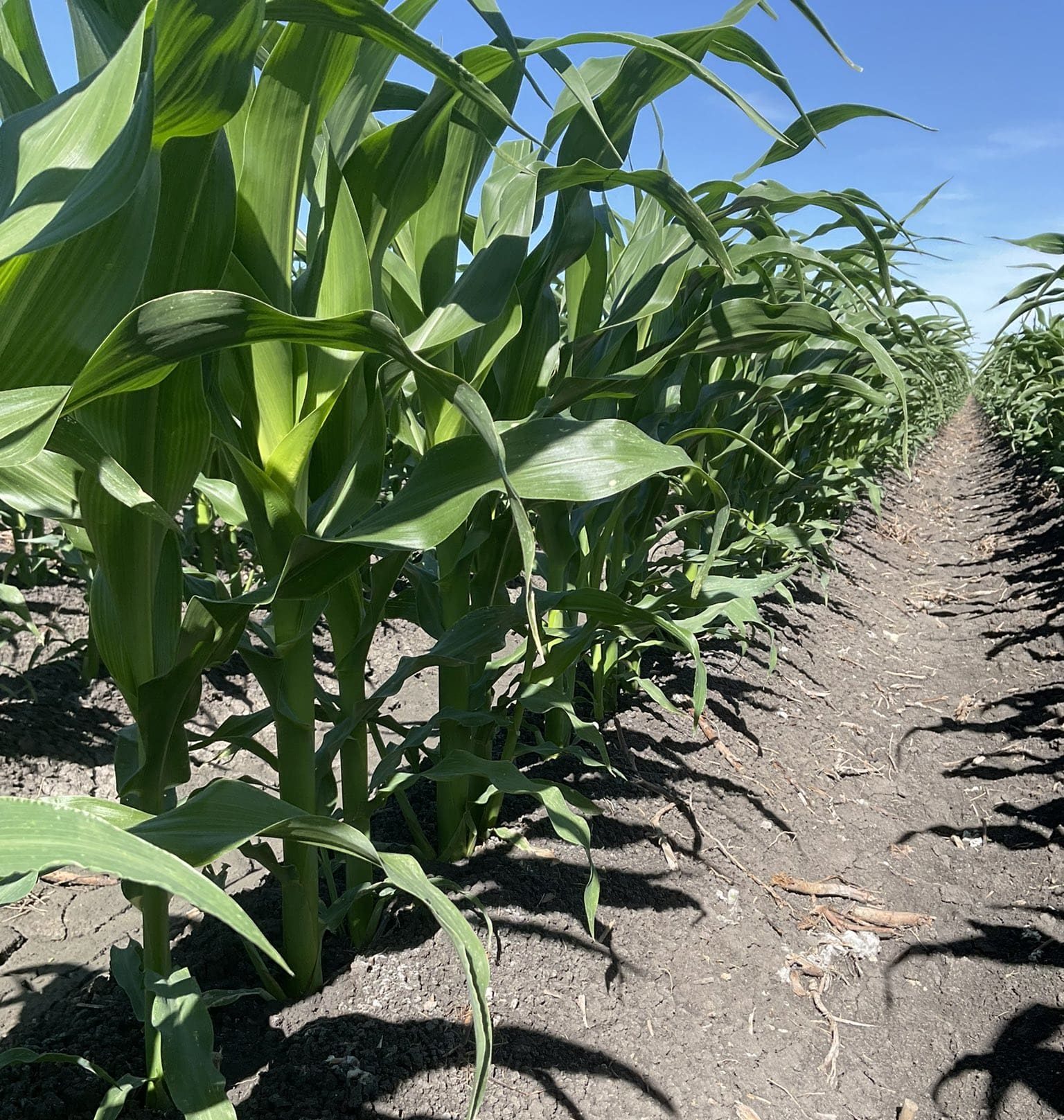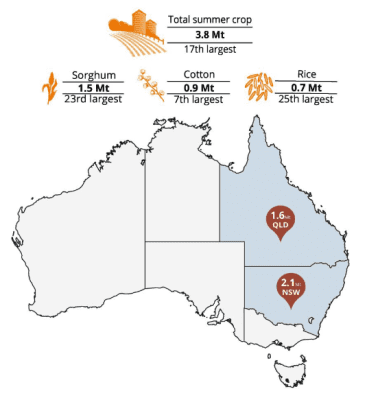
An irrigated crop of P1837 maize planted on November 11 and growing at Maude in the Riverina district of southern NSW. Photo: Liam Whitbourne, Elders
AUSTRALIA’S summer-crop production is forecast to fall by 27pc to 3.8 million tonnes (Mt) in 2023-24, according to ABARES December Australian Crop Report released this week.
Despite being a significant fall from last year’s highs, this is still slightly above the 10-year average to 2022-23 of 3.5Mt.
The fall in summer-crop plantings reflects below-average rainfall and low soil-moisture levels during the early planting window across key dryland summer-cropping regions in Queensland and northern New South Wales.
Above-average November rainfall is expected to boost soil-moisture levels for crop establishment and growth and provide favourable planting conditions for some later-sown summer crops.
The Bureau of Meteorology’s rainfall outlook for December suggests there is a 75 percent chance of rainfall totals of 10-50mm across cropping regions in NSW and Qld.
Given the above-average rainfall recorded across southern Qld and north-eastern NSW during November, if realised, these forecast rainfall totals for December will provide some useful follow-up falls for dryland summer crops.
Cotton is a major Australian summer crop, and projections for the 2023-24 cotton crop from ABARES and Cotton Australia are available in a separate story.
Sorghum
ABARES is predicting sorghum production will take a significant hit in 2023-24, falling by 45pc to 1.5Mt.
Dry conditions and declining soil moisture levels during the early planting window are expected to see the area planted to sorghum fall to 517,000ha in 2023-24.

Figure 1: ABARES estimates for Australia’s four largest summer crops. Source: ABARES
This is down 25pc from the previous season and is slightly below the 10-year average to 2022-23.
Above-average November rainfall is expected to boost the production potential of sorghum crops and allow for planting of later-sown sorghum.
Qld’s sorghum production is forecast to fall by 42pc to around 1.1Mt in 2023-24, on the back of expected lower yields and planted area.
Area planted to sorghum is also anticipated to fall by 21pc in 2023-24 due to well below-average soil-moisture levels discouraging planting during much of the early planting window from September to mid-November.
A below-average spring rainfall outlook is also expected to have contributed to this decline.
Sorghum production in NSW was also hit by low rainfall from September until mid-November, and is forecast to decline by 51pc to 403,000t.
Planted area is estimated to drop by 33pc to 130,000ha.
In NSW, expected summer rainfall is likely to be sufficient to support crop establishment and growth for both early and late-planted sorghum crops.
Recent November rainfall has resulted in average to above average levels of soil moisture which is expected to result in sorghum yields close to the 10-year average.
Maize
The Australian maize production is forecast to decline by about 10pc to 368,000t according to ABARES December Crop Report.
Planted area remains consistent, dropping slightly from 52,200ha in 2022-23 to 48,700ha in 2023-24.
NSW is still the largest producer with the state’s maize crop to reach 195,000t, up from the five-year average of 166,000t.
Qld will record a slight decline in production at 90,000t, down from 110,000t harvested in 2022-23.
Victoria’s maize crop looks set to fall the most, dropping from 70,000t in 2022-23 to 55,000t in 2023-24.
Sunflowers
The sunflower crop looks set to stabilise with ABARES predicting total production to reach 37,000t in 2023-24, the same as 2022-23.
These two seasons are the largest sunflower crop since 2012-13.
The strong volumes are driven by NSW production, which is forecast to hit 32,000t, over twice the five-year average.
The next largest producer, Queensland, is estimated to grow 5000t of sunflowers in 2023-24.
This will be the same volume as last season, and down on the five-year average of 6800t.
Source: ABARES

HAVE YOUR SAY